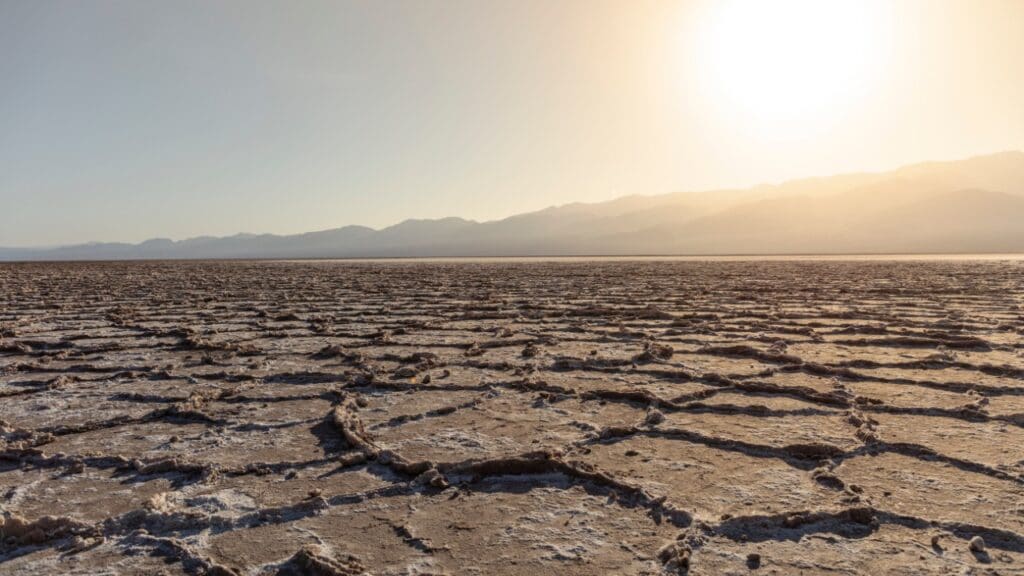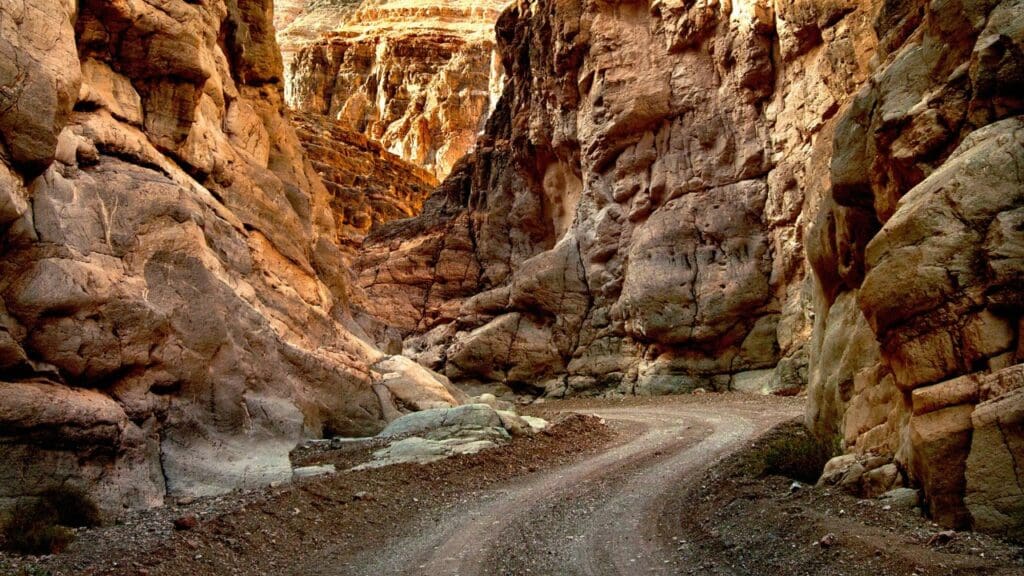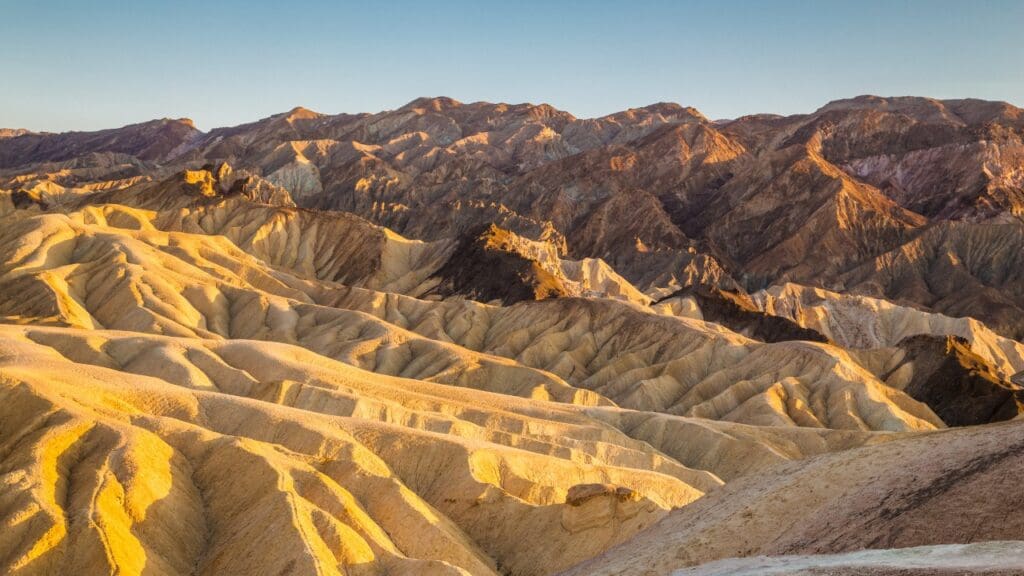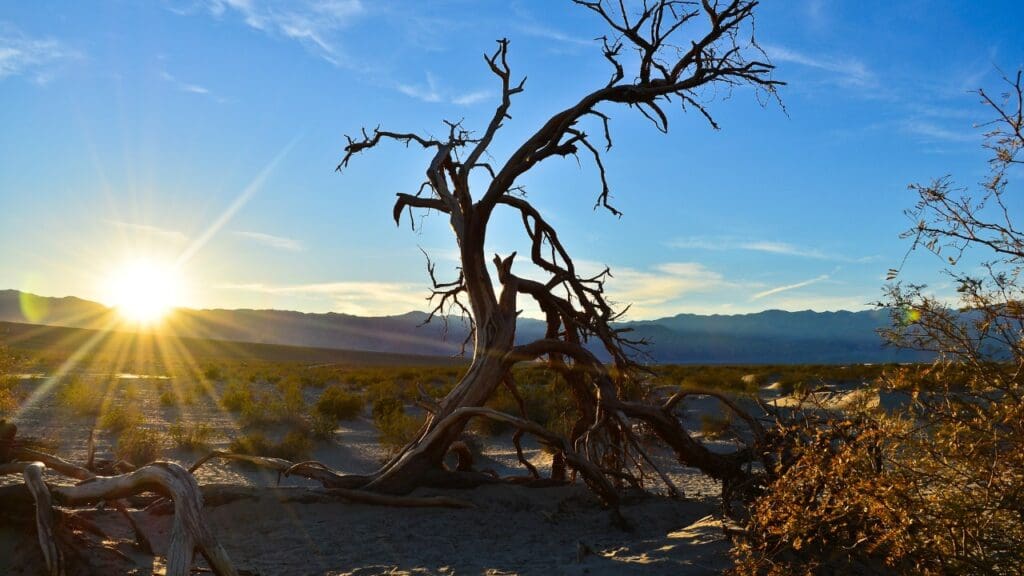Death Valley National Park: A First Time Visitor Guide

Death Valley National Park, located in eastern California and stretching into Nevada, is one of the most extreme and breathtaking places in the United States. Known as the hottest, driest, and lowest national park, it offers an array of unique landscapes, from vast salt flats and towering sand dunes to colorful canyons and rugged mountains. This guide will help first-time visitors make the most of their trip to this remarkable desert destination.
Basic info:
- Name: Death Valley National Park
- Location: South Eastern California
- Fee: $30 per vehicle
- Things to do: Scenic drives, hiking, stargazing and more (see top recommendations)
Overview:
Death Valley is the largest national park in the contiguous United States, spanning over 3.4 million acres. Despite its name, the park is teeming with life, from resilient desert plants to diverse wildlife. The park’s extreme conditions, including summer temperatures that can exceed 120°F (49°C), make it a destination best explored with proper planning.
- Entrance Fee: $30 per vehicle (valid for 7 days)
- Best Time to Visit: Fall (October to November), winter (December to February), and spring (March to April) are ideal due to cooler temperatures.
Photos:















Getting There:
The park is accessible by car and is located about two hours west of Las Vegas, Nevada, and about four hours northeast of Los Angeles, California.
- Driving Directions:
- From Las Vegas: Take US-95 North to NV-373 South, then continue to CA-190 West, which leads into the park.
- From Los Angeles: Take I-15 North to CA-127 North, then merge onto CA-190 East.
- Nearest Airports:
- McCarran International Airport (LAS) in Las Vegas (120 miles)
- Furnace Creek Airport (L06): A small airstrip within the park for private aircraft.
7 Best Things To Do:
Death Valley is filled with incredible sights that showcase the diversity of its landscapes.
- Badwater Basin: The lowest point in North America at 282 feet below sea level, Badwater Basin is famous for its vast salt flats. A short walk will take you onto the otherworldly hexagonal salt patterns.
- Mesquite Flat Sand Dunes: These towering dunes near Stovepipe Wells are perfect for hiking and photography, especially at sunrise or sunset when the light casts dramatic shadows across the sand.
- Zabriskie Point: One of the park’s most iconic viewpoints, Zabriskie Point offers stunning vistas of golden badlands and is especially popular during sunrise and sunset.
- Artist’s Drive and Artist’s Palette: This scenic nine-mile loop showcases hills painted in vibrant colors by oxidized minerals. Stop at Artist’s Palette for the most colorful views.
- Dante’s View: Perched at 5,475 feet, this viewpoint provides sweeping panoramas of Death Valley, including Badwater Basin and the Panamint Mountains. It’s an ideal spot for stargazing at night.
- Devil’s Golf Course: Named for its jagged salt formations, this rugged terrain looks like it belongs on another planet. It’s a must-see for geology enthusiasts.
- Golden Canyon and Gower Gulch Loop: A popular hiking trail that winds through colorful canyons and offers views of Red Cathedral, this 4-mile loop is a great introduction to Death Valley’s hiking opportunities.
Outdoor Activities:
Death Valley offers a wide range of activities for adventurers and casual visitors alike.
- Hiking:
- Mosaic Canyon: A 4-mile round-trip hike through narrow marble canyons.
- Golden Canyon: A 2-mile out-and-back hike to stunning views of Red Cathedral.
- Telescope Peak: A strenuous 14-mile hike offering views of both Death Valley and the Sierra Nevada.
- Scenic Drives:
- Artist’s Drive: A one-way loop showcasing colorful hills.
- Twenty Mule Team Canyon: A short dirt road drive through fascinating badlands.
- Wildrose Charcoal Kilns: A scenic route leading to historic kilns used in the late 1800s.
- Stargazing: As an International Dark Sky Park, Death Valley offers some of the clearest night skies in the United States. Visit spots like Harmony Borax Works or Mesquite Flat Sand Dunes for incredible stargazing.
- Wildflower Viewing: During spring, especially after a wet winter, Death Valley’s desert blooms with colorful wildflowers, transforming the arid landscape into a vibrant scene.
Wildlife and Plants:
Despite its harsh environment, Death Valley is home to unique flora and fauna.
- Wildlife: Look for bighorn sheep, coyotes, kit foxes, and roadrunners. Birds like golden eagles and burrowing owls are also common.
- Plants: The park features salt-tolerant species like pickleweed and mesquite trees, as well as seasonal wildflowers like desert marigold and primrose.
Where to Stay:
Accommodations range from campgrounds to resorts within and near the park.
- In the Park:
- The Oasis at Death Valley: A luxury resort in Furnace Creek with lush gardens and a spring-fed pool.
- Stovepipe Wells Village: A budget-friendly option with comfortable lodging and dining.
- Furnace Creek Campground: Offers amenities like picnic tables and fire pits. Reservations are recommended.
- Outside the Park:
- Stay in nearby towns like Beatty, Nevada, or Lone Pine, California, which offer additional lodging and dining options.
Tips for Visitors:
- Bring Plenty of Water: Death Valley’s dry heat can dehydrate you quickly. Plan to carry at least a gallon of water per person per day.
- Dress in Layers: Temperatures can vary drastically between day and night. Wear lightweight, breathable clothing during the day and bring warm layers for cooler evenings.
- Check Your Vehicle: Ensure your car is in good condition, especially if you plan to drive off-road. Keep a full tank of gas, as stations within the park are limited.
- Start Early: Visit popular spots like Zabriskie Point or Badwater Basin in the morning to avoid crowds and midday heat.
- Download Maps: Cell service is limited in the park, so download offline maps or carry a paper map.
Nearby Attractions:
If you have extra time, consider exploring these nearby destinations:
- Rhyolite Ghost Town: A fascinating ghost town just outside the park, featuring abandoned buildings and an outdoor art installation called the Goldwell Open Air Museum.
- Ash Meadows National Wildlife Refuge: Located near Death Valley, this refuge is home to unique desert springs and the endangered Devil’s Hole pupfish.
- Mount Whitney: About 2 hours west, this is the highest peak in the contiguous United States and offers stunning hikes.
- Alabama Hills: Only 2 hours from Death Valley, Alabama Hills has similar terrain but also mixes in things you’d see in places like Joshua Tree National Park. An amazing place to visit!
Last Things to Know:
Death Valley National Park is a land of extremes and unparalleled beauty. From the salt flats of Badwater Basin to the vibrant hues of Artist’s Palette, the park’s landscapes are unlike any other. Whether you’re hiking through colorful canyons, marveling at the star-filled skies, or simply enjoying the vastness of the desert, your visit to Death Valley will be a journey into one of nature’s most remarkable creations. With a little preparation, first-time visitors can enjoy a safe and unforgettable adventure in this extraordinary desert wonderland.
